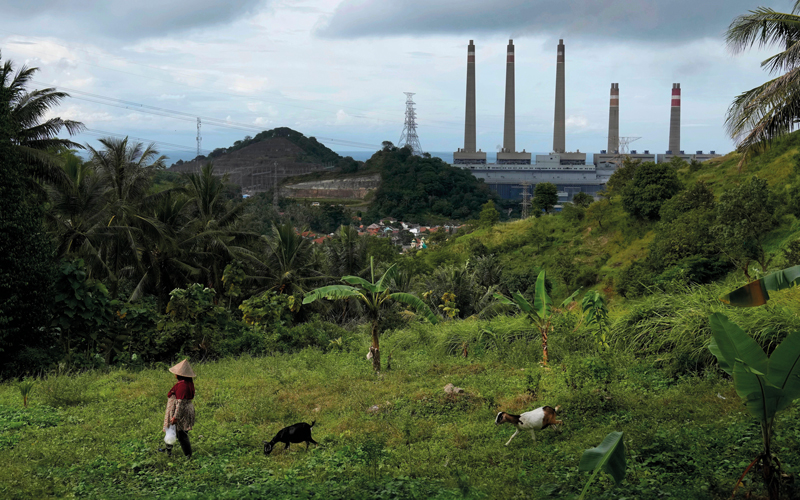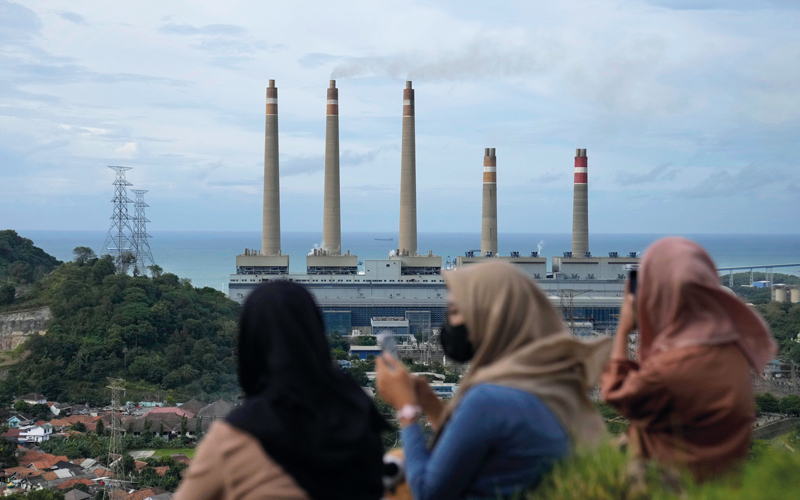Japan's leadership in Southeast Asia's energy transition
As Southeast Asia grapples with the urgent need to slash its carbon emissions in line with COP21 targets, Japan is fundamentally reshaping the region’s approach to combating climate change, says Firdaus Azman at EIC

Southeast Asia faces a challenging journey towards reducing carbon emissions and adopting sustainable energy sources. Japan emerges as a pivotal ally in this endeavour, providing crucial financial support and cutting edge technology. From biomass co-firing programmes in Indonesia to liquefied natural gas (LNG) to-power projects in Vietnam, Japanese conglomerates and financial institutions are essential to advancing the region’s energy transition agenda.
Indonesia’s innovative carbon reduction
Despite the challenges of transitioning away from coal in Southeast Asia and the wider Asia-Pacific (APAC) region, Indonesia’s approach to curbing carbon emissions from power plants has garnered recognition, particularly from major Japanese conglomerates such as JERA.
In 2019, state-owned PT Perusahaan Listrik Negara (PLN) launched a programme to reduce emissions from coal-fired power plants through biomass co-firing trials. Up to 1m tonnes of biomass sourced from PT PLN Energy Primer Indonesia was initially used in 2023. In February 2024, PT PLN announced its intention to supply an additional 2.56m tonnes of biomass this year, following a reduction of greenhouse gas emissions by 1.05m tonnes in 2023.
By the programme’s completion, 114 operating coal-fired assets will have been retrofitted with the capability to co-fire locally sourced biomass from the agriculture industry, addressing supply chain concerns.
Japanese corporations, as the original suppliers of the gas turbines, have shown interest in participating in this programme, spearheading the feasibility studies that preceded the co-firing trials. One example is the Mitsubishi Heavy Industries’ (MHI) M701F coal turbine used in the Suralaya Coal Power Plant in Jakarta, which is currently undergoing a feasibility study for biomass co-firing.
MHI is also investigating the co-firing of alternative fuels such as ammonia and hydrogen alongside biomass, which would further advance efforts towards achieving carbon-neutral emissions. However, sourcing ammonia and hydrogen poses a challenge as both industries are still nascent, demanding substantial time and funding to realise this ambition fully.

Vietnam’s LNG-to- power
Since 2020, EIC has reported a significant uptick in proposals for LNG-to-power plants in Vietnam, with a collective capacity of approximately 65GW in electric generation. These projects, slated for construction between 2024 and 2035, underscore the country’s dedication to transitioning towards cleaner energy sources.
Vietnam’s government is actively advocating for establishing LNG-fuelled plants – something that is aligned with its commitment to combat climate change, laid out in its 2021-2030 National Plan. The National Plan targets the installation of at least 22.4GW of LNG-fired thermal units by 2030 – a goal Vietnam has already exceeded, with more than 40GW in the project pipeline.
However, additional efforts will be imperative, especially in financing. Estimates from the UN Development Programme suggest that up to US$100bn in funding is needed for the successful execution of the plan.
Vietnam has a steadfast financial partnership with Japan, mainly through the multilateral framework established in the Asia Zero Emission Community initiative. This facilitates loans and financial assistance from the Japan Bank for International Cooperation for various Japanese entities operating within Vietnam.
Projects such as the 660MW O Mon 1 gas-fired power plant, which received funding from Japan in 2002 and completed construction in 2016, show Vietnam’s successful partnership with Japan. The recent announcement of the 1,500MW Thai Binh LNG-to-Power Plant, by a consortium including Tokyo Gas Company, Truong Thanh Joint Stock Company and Kyuden International, shows ongoing collaboration. With a feasibility study underway, construction is expected to begin in 2025 and be completed by 2030.
Japan’s role in Asia-Pacific’s conundrum
Transitioning away from coal remains a challenge in the APAC region, primarily due to the upfront costs associated with establishing traditional renewable energy infrastructure such as wind and solar, and constructing a reliable transmission grid. The region has long enjoyed a partnership with Japan, which offers financial and technological assistance to support the export of its products.
This support extends beyond traditional renewable energy projects, encompassing emerging sectors such as ammonia and hydrogen production in Malaysia and Indonesia. Japan’s hydrogen sector remains nascent, driving collaboration with APAC partners to foster growth.
As the energy transition gains momentum, Japan is poised to take the lead in providing funding and expertise. With ongoing efforts to support clean energy initiatives, Japan’s partnership will likely play a pivotal role in the transition from coal.
Major projects To Watch
Vietnam
Hai Lang LNG-fired Power Plant – Phase 1
Value: US$2.3bn
Startup: 2030
Stage: Feasibility
Status: Planning consent applied
Operator: KOGAS (Korean Gas Corporation)
Quang Tri LNG-fired Power Plant
Value: US$2bn
Startup: 2028
Stage: Feasibility
Status: Planning
Operator: SK E&S
Thai Binh LNG Power Plant
Value: US$1.5bn
Startup: 2028
Stage: Feasibility
Status: Government/authority approved
Operator: Thai Binh LNG Power Joint Stock Company (TBLP)
Indonesia
Grasberg Mine CCGT Power Plant (PTFI)
Value: US$1bn
Startup: 2027
Stage: FEED
Status: Government/authority approved
Operator: PT Freeport Indonesia
PLTGU Batam Bintan 1 Gas-fired Power Plant
Value: US$200m
Startup: 2026
Stage: EPC
Status: Tendering and bidding
Operator: PLN Batam
Source: EICDataStream

Where are the opportunities in Asia-Pacific?
| 1 | Indonesia | 54 projects | US$27,387bn |
| 2 | India | 54 projects | US$77,505bn |
| 3 | China | 51 projects | US$43,526bn |
| 4 | Vietnam | 41 projects | US$86,880bn |
| 5 | Bangladesh | 19 projects |
US$35,995bn |
Interested in exploring global power opportunities?
Inform your decision-making with the latest contracting activity and market research from EIC.
To discuss your needs, email Firdaus Azman at firdaus.azman@the-eic.com
Image credit | Alamy






Follow us
Advertise
Free e-Newsletter